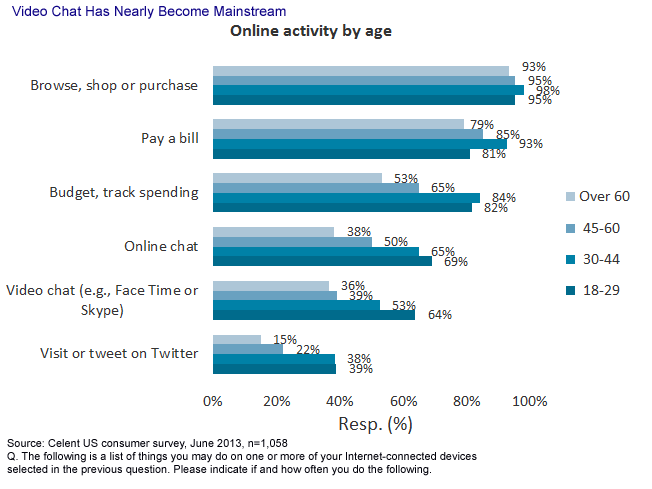Video Banking: Lights, Camera, Transaction?
Abstract
Telepresence holds great promise for retail banking, but most early-movers are missing the boat. Rather than reinventing the teller experience, banks should pursue video banking as an omnichannel mechanism to improve customer engagement.
In the report Video Banking: Lights, Camera, Transaction?, Celent takes a no-nonsense look at the emerging use of telepresence in retail banking and advocates a vision for how it can be used to enhance customer engagement while reducing cost to serve. The report draws upon interviews among financial institutions and solution providers as well as a survey administered among 1,033 US consumers in June 2013.
Real time video (or telepresence) was once a novelty requiring expensive equipment and high bandwidth data connections. Now, a majority of young and middle aged adults use video chat on desktop, tablet, and mobile devices. Consumers’ increasing use of telepresence creates both challenge and opportunity for banks.

“There are several reasons for banks to explore video banking” says Bob Meara, Senior Analyst with Celent’s Banking Group and author of the report. “The most compelling reason is customer engagement, not cost savings. Banks have relied almost exclusively on the branch channel for customer engagement and embraced digital channels merely for low-cost transactions. That model no longer works.”
This report begins with an analysis of consumer and technology trends to support why video banking makes sense, and why now is the right time to pursue its use. The report then examines how video banking is being used among early-mover banks and credit unions, followed by contrasting case studies examining the use of telepresence as part of branch transformation initiatives. Finally, the report advocates a vision for omnichannel video banking alongside other digital engagement mechanisms, a vision decidedly different than the prevailing use of video in personal teller machines.

